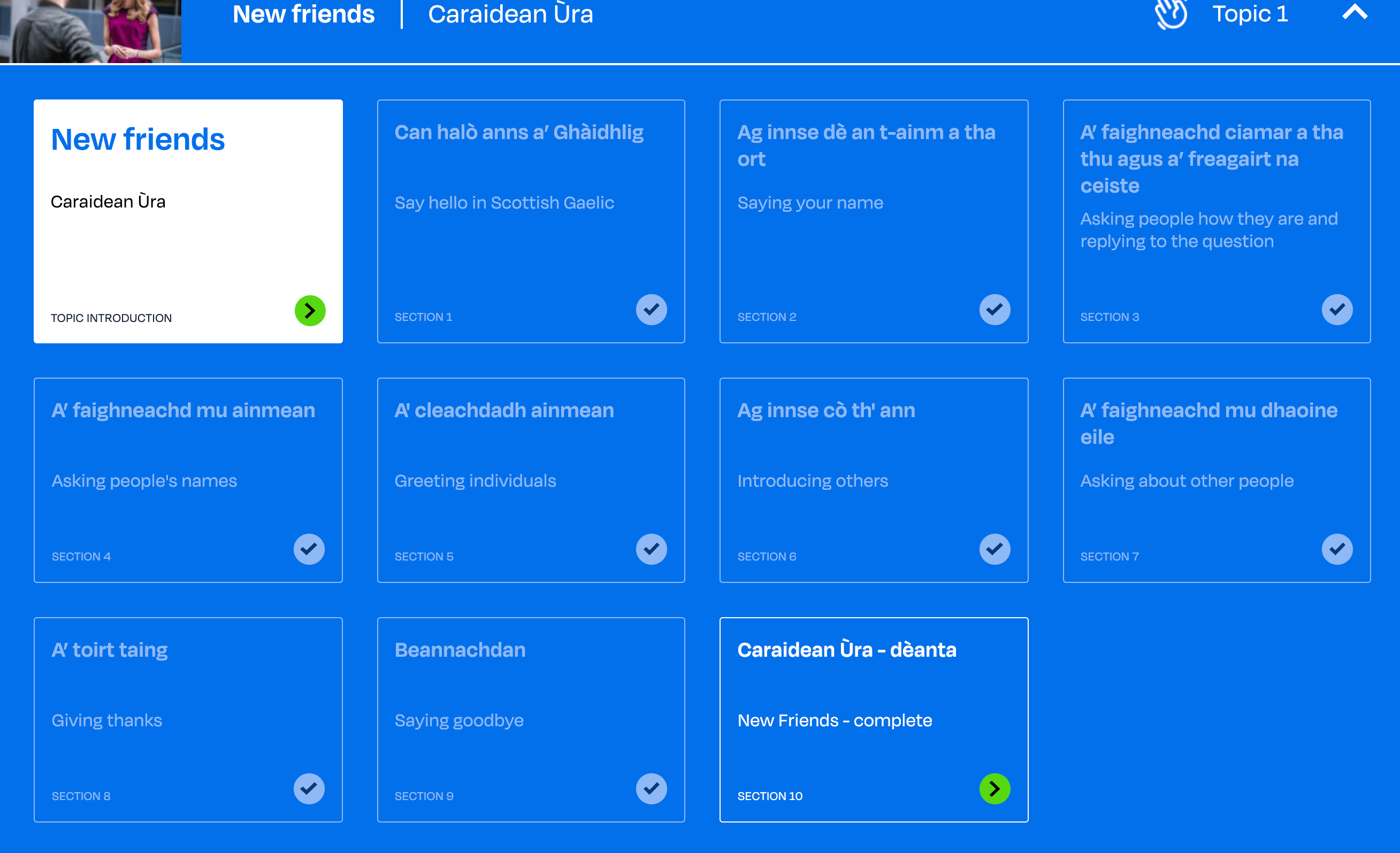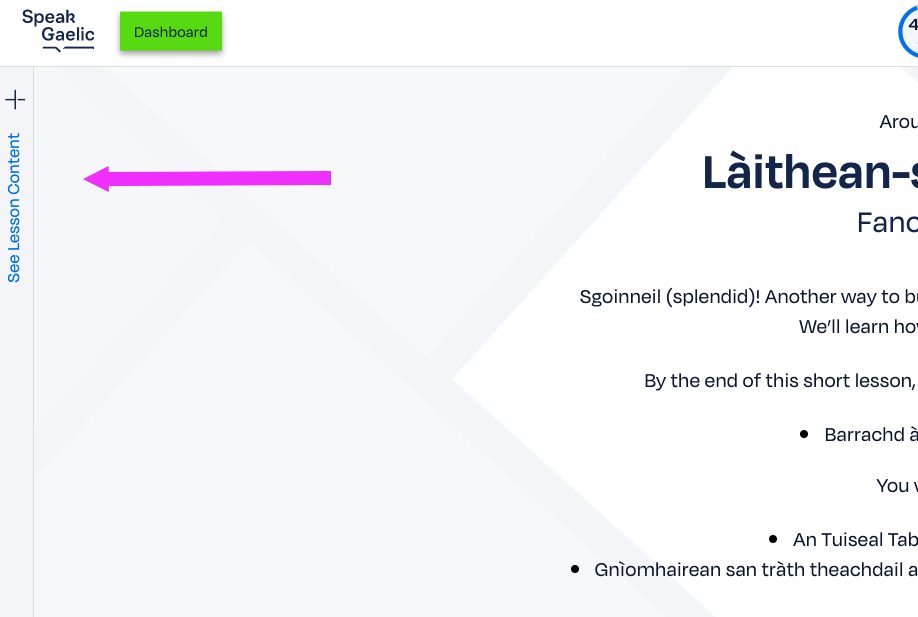Nam àite
In my place
We’ve seen a few examples of compound prepositions and how they combine with mo, do, a, a, ar, ur and an/am.
The compound preposition (ann) an àite uses the preposition ann an, and so to say ‘in my place’ we need to remember how we combine the simple preposition ann an with mo, do, a, a, ar, ur and an/am.
Cò thigeadh nam àite?
Who’d come in my place?
Am faigh sinn cuideigin ùr na h-àite?
Will we get someone new in place of her?
Thèid mise ann na àite, tha esan ro thrang.
I’ll go in his place, he is too busy.
| an àite + mo | nam àite | in my place |
| an àite + do | nad àite | in your place (singular) |
| an àite + a | na h-àite | in her place |
| an àite + a | na àite | in his place |
| an àite + ar | nar n-àite | in our place |
| an àite + ur | nur n-àite | in your place (polite/plural) |
| an àite + an | nan àite | in their place |
Chan urrainn dhòmhsa a dhol ann, an tèid thusa nam àite?
I can’t go, will you go in my place?
Cha d’ fhuair sinn cuideigin a thigeadh nad àite.
We haven’t got someone who’ll go in your place.
Dh’fhalbh iad agus cha tàinig daoine eile nan àite.
They left and no-one else came in their place.
Rachainn na h-àite, ach tha mi ro thrang an-dràsta.
I would go in her place, but I’m too busy just now.
An àite na trèan(a), dh’fhaodadh tu a dhol air a’ bhus.
Instead of the train, you could go on the bus.
Càit an rachadh tu an àite na Frainge?
Where would you go instead of France?
Remember that when compound prepositions are used with a noun, the noun is usually in the genitive case:
An àite na trèan(a), dh’fhaodadh tu a dhol air a’ bhus.
Instead of the train, you could go on the bus.
Càit an rachadh tu an àite na Frainge?
Where would you go instead of France?
Gnàthas–cainnte/seanfhacal
Am fear as fhaide a chaidh bhon bhaile, chuala e an ceòl bu mhìlse ri linn tilleadh dhachaigh.
The man who went furthest from home, heard the sweetest music on returning home.




